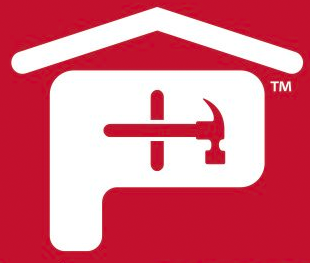

The Importance of Exposing Students to the Trades
Between Baby Boomers retiring, “The Great Resignation” fueled by COVID-19 and more young people opting not to have children, the United States is facing a talent recession of what could turn out to be epic proportions, by the year 2030.
In most American households, parental and societal pressures often make children feel as if the only road to a successful career is via college. Yet, many of these degree-holding adults end up unhappy in their careers or in careers that don’t even require a college education. In the meantime, they’re drowning in student loan debt, and they don’t have any skills outside their college major that would allow them to apply for jobs in other industries.
As a February 2022 Bloomberg article states, “The expansion of college education is hitting the twin buffers of debt and utility: Americans owe $1.75 trillion in student loan debt, spread out among some 43 million borrowers, yet according to the Federal Reserve Bank of New York, more than 40% of recent graduates are underemployed in jobs that don’t require a college education.”
Because they were conditioned to think there was only one path to success, these young, now college-educated Americans weren’t aware that they had other educational options and career opportunities in the skilled trades.
Unfortunately, they didn’t know that a vocation as a roofing contractor, for instance, may provide a higher salary than their current career and potentially more job satisfaction in their day-to-day work life — without the need for four years of college and astronomical student loan debt.
Trade School vs. College
The U.S. Bureau of Labor Statistics (BLS) projects that between 2020 and 2030, most jobs (about 60%) will be in occupations that don’t typically require a college degree, including construction and installation, and maintenance and repair.
Not to mention the fact that some students find higher education too exhausting or challenging to complete. According to EducationData.org, between the fall semesters of 2019 and 2020, nearly one quarter of first-time, full-time freshmen dropped out of college. At two-year institutions, nearly 40% dropped out.
For students with tactile learning styles who may struggle with a traditional classroom education — or simply don’t want to spend their careers behind a desk — the skilled trades offer countless positions in a variety of industries. For example, the construction industry includes opportunities for carpenters, electricians, plumbers, pipefitters, masons, painters, roofers and more.
Many of these industries offer hands-on and/or on-the-job training, allowing students to get a true feel for their trade.
Compared to college, trade schools provide focused training in a specific, skilled vocation, with the added benefits of taking less time to complete and being more affordable. That means trade school graduates can start working in their careers sooner and they can keep more of their earnings in their pockets instead of having to pay back endless student loan debt.
And there’s always room for students to grow within their chosen industry.
According to the BLS, the 2021 median pay for a roofer was $47,110 per year. However, according to PayScale.com, the average salary for a roofing contractor who is the president of their own roofing company is more than $120,000 per year.
Sure, a business degree could be a useful asset for an entrepreneur, but it’s not required to build a successful career in the trades.
A Step in the Right Direction
Even before enrolling in a trade school, students have opportunities to learn about and gain experience in their fields of interest, through organizations such as SkillsUSA and the NRCA.
With three programs based on grade level, SkillsUSA prepares middle-school, high-school and college/postsecondary students for careers in trade, technical and skilled service occupations.
From its Connect to My Future conference, which allows students to explore career paths and directly connect with employers, to its SkillsUSA Championships career competition, the organization is dedicated to helping students excel in their future.
For roofing specifically, a roofing company near Atlanta, GA, partnered with the Construction Education Foundation of Georgia (CEFGA) “to connect with local high schools to introduce roofing into the curricula and build relationships with students who have the most potential to succeed in the roofing industry,” according to an article on the National Roofing Contractors Association (NRCA) website.
The NRCA’s Training for Roof Applications Careers (TRAC) program, which blends online and hands-on training through six learning modules, was designed for roofing companies to provide new and inexperienced workers with the information and skills they need to become quality roof system installers in the field.
Based on those modules, the Atlanta roofing company created 30-, 60- and 90-day learning targets for high-school students, helping to guide them down a near-direct path into the industry.
Fueling the Future
With an unprecedented skilled labor shortage on the horizon, it’s imperative that industries, such as roofing, reach out schools to show students from elementary to high school that they can have a lucrative and satisfying career in the skilled trades.








 Gear!
Gear! PRO LOGIN
PRO LOGIN